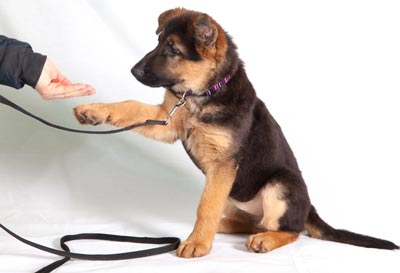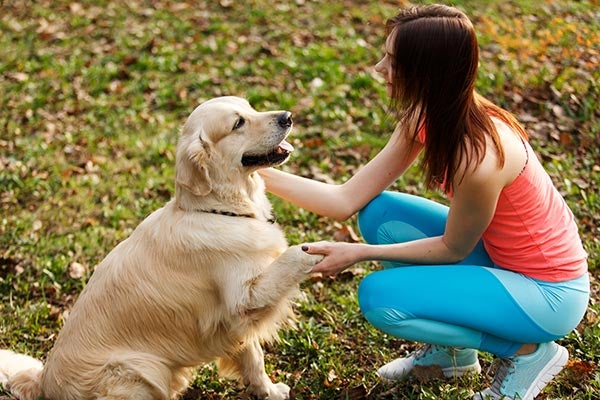The Ultimate Overview to Pet Dog Training: Building a Pleased, Obedient Pet
Reliable dog training is a diverse process that pivots on a deep understanding of canine actions and the application of tried and tested techniques. By welcoming positive reinforcement and constant command use, pet owners can cultivate not just obedience yet also a strong, trusting partnership with their canines. The journey does not finish with fundamental commands; addressing behavioral concerns and creating a supporting training setting are equally vital parts. As we discover these aspects, it comes to be evident that the path to a content and well-behaved canine companion may hold more intricacies than one could originally assume.

Comprehending Pooch Behavior
Exactly how does a canine's behavior reflect its emotional and psychological state? A pet dog's activities can offer as a window into its sensations, requirements, and overall psychological health. For circumstances, a wagging tail commonly indicates joy and enjoyment, while a reduced tail may indicate worry or entry. Vocalizations such as whining or barking can connect a variety of emotions, from happiness to distress.
Body movement additionally plays an essential function in recognizing canine actions. An unwinded position and open mouth signal comfort, whereas strained muscle mass and pinned ears might recommend anxiousness or aggression. Observing these signals is necessary for recognizing the source of a dog's habits, whether it stems from worry, enjoyment, or disappointment.
Furthermore, a pet dog's interaction with its atmosphere and other animals can supply understanding right into its emotional state. As an example, a pet dog that involves playfully with other pet dogs is likely feeling social and protected, while one that exhibits avoidance or aggression may be experiencing stress or insecurity. Comprehending these behavioral signs is important for fostering a strong partnership between the owner and the family pet, ultimately adding to the dog's emotional health and wellness.
Vital Educating Methods
Reliable canine training strategies are important for cultivating desirable habits and strengthening the bond between a pet and its owner. Making use of favorable reinforcement is just one of the most reliable methods, where incentives such as treats, praise, or play are offered to reinforce wanted actions (Dog training). This encourages the canine to repeat those actions, producing a positive discovering environment
Uniformity is one more vital aspect in dog training. Commands ought to be clear and consistent, and all member of the family have to apply the very same rules to avoid puzzling the pet dog. Timing is just as vital; rewards ought to be provided immediately after the desired habits to develop a clear link in between the action and the benefit.
Furthermore, interesting and brief training sessions are effective, as dogs have varying interest periods. Go for sessions of 5 to 15 mins, relying on the pet's age and power level. Integrating play into training can also improve inspiration and pleasure for both the proprietor and the pet dog.
Finally, persistence is vital. Pet dogs discover at their own pace, and keeping a tranquil demeanor will help alleviate disappointment, making sure a positive training experience. These important strategies lay the groundwork for effective pet dog training and a harmonious relationship.
Basic Commands to Educate

Use treats, praise, and play to reward your dog's successes. By instilling these basic commands, owners equip their pet dogs with the abilities needed for a mannerly and harmonious partnership.
Addressing Typical Behavioral Problems
Comprehending and resolving common behavior concerns in pets is essential for cultivating a harmonious relationship in between animals and their proprietors. Lots of pet dogs exhibit behaviors such as extreme barking, chewing, or aggressiveness, which can come from anxiety, boredom, or absence of appropriate training. Identifying the source of these actions is the very first action towards efficient intervention.
For instance, extreme barking may show a demand for interest or an action to environmental stimulations. In such instances, proprietors must examine the pet dog's setting and give adequate mental excitement, such as interactive playthings or regular workout. Eating can typically be taken care of by redirecting the behavior to appropriate chew things and guaranteeing that the dog has adequate exercise to reduce monotony.
Aggressive actions requires careful handling and may necessitate professional training help. It's essential to comprehend that penalty can aggravate anxiety and hostility, causing a cycle of behavior concerns. Instead, focus on positive reinforcement methods to award preferable behaviors and strengthen a feeling of safety.
Building a Positive Training Setting
Developing a positive training atmosphere is basic for reinforcing preferable look here actions in canines and minimizing behavior issues. This atmosphere needs to be characterized by consistency, support, and a clear understanding of the training objectives. By establishing a regular, pets discover what is expected of them, which helps in reducing anxiety and confusion.
Utilizing favorable reinforcement strategies, train dog to stop barking such as treats, appreciation, and play, fosters a sense of safety and security and inspiration in the dog. Rewarding great actions instantly and constantly enhances the preferred actions, making the training process much more effective - Dog training. Additionally, trainers ought to continue to be person and calm, as pets are delicate to their trainers' feelings
The training space must be without interruptions to ensure the pet can concentrate on the tasks handy. Think about making use of a peaceful room or a safe and secure outside location. Including play and socialization right into training sessions promotes a well-shaped technique, enhancing the dog's learning experience.
Inevitably, a positive training atmosphere nurtures a solid bond between the pet dog and handler, bring about an obedient, satisfied pet. By prioritizing this environment, pet owners can effectively address behavior difficulties and cultivate an effective training journey.
Final Thought
Effective pet dog training relies on a thorough understanding of canine habits and the application of favorable reinforcement strategies. Embracing these concepts guarantees a fulfilling training experience for both canines and their proprietors.
Efficient dog training is a diverse procedure that pivots on a deep understanding of canine actions and the application of tried and tested strategies. A pet that involves happily with various other pets is most likely feeling social and protected, while one that exhibits check my site evasion or aggressiveness may be experiencing anxiety or insecurity.Effective pet training strategies are essential for cultivating preferable habits and strengthening the bond in between a pet dog and its owner.Creating a favorable training setting is essential for reinforcing desirable actions in pets and minimizing behavior problems.Effective dog training relies on a comprehensive understanding of canine behavior and the application of favorable support techniques.
Comments on “Dog Training Charlotte NC: Your Path to a Well-Behaved Dog”